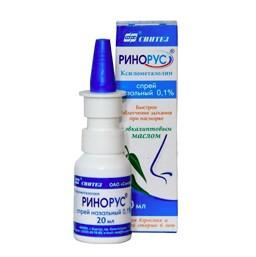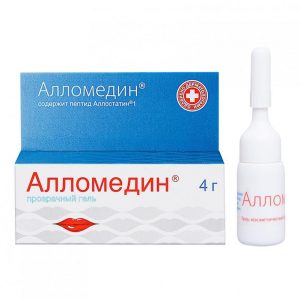Description
Release form
Syrup 20 mg / ml: 100 ml syrup per bottle in dark glass, sealed with white caps with a sealing membrane, with anti-tamper function for children, with a protective ring
Dosing devices: – transparent measuring cup (cap) graduated in 2.5, 5 and 10 ml
– a transparent syringe for dispensing, graduated in 2.5 and 5 ml with a white piston and with an adapter ring for fastening on a bottle.
1 bottle with dispensing devices and together with instructions for use in a cardboard box.
Pharmacological action
PHARMACODYNAMICS
Acetylcysteine is a derivative of the amino acid cysteine. It has a mucolytic effect, facilitates sputum discharge due to a direct effect on the rheological properties of sputum. The action is due to the ability to break the disulfide bonds of mucopolysaccharide chains and cause depolymerization of mucoproteins of sputum, which leads to a decrease in the viscosity of sputum. The drug remains active in the presence of purulent sputum. It has an antioxidant effect, based on the ability of its reactive sulfhydryl groups (SH-groups) to bind with oxidative radicals and, thus, neutralize them. In addition, acetylcysteine promotes the synthesis of glutathione, an important component of the antioxidant system and chemical detoxification of the body. The antioxidant effect of acetylcysteine increases the protection of cells from the damaging effects of free radical oxidation, which is characteristic of an intense inflammatory reaction. With the prophylactic use of acetylcysteine, there is a decrease in the frequency and severity of exacerbations of bacterial etiology in patients with chronic bronchitis and cystic fibrosis.
PHARMACOKINETICS
Absorption is high. It is rapidly metabolized in the liver with the formation of a pharmacologically active metabolite – cysteine, as well as diacetylcysteine, cystine and mixed disulfides. Oral bioavailability is 10% (due to the presence of a pronounced effect of “first passage” through the liver). The time to reach maximum concentration (Cmax) in blood plasma is 1 to 3 hours. Communication with plasma proteins is 50%. It is excreted by the kidneys in the form of inactive metabolites (inorganic sulfates, diacetylcysteine). The half-life (T1 / 2) is about 1 hour, impaired liver function leads to an extension of T1 / 2 to 8 hours. It penetrates the placental barrier. Data on the ability of acetylcysteine to cross the blood-brain barrier and excreted in breast milk are not available.
Indications
Acute and chronic respiratory diseases associated with the formation of viscous difficult to separate bronchial secretions:
acute and chronic bronchitis
tracheitis, laryngotracheitis
bronchiolitis, pneumonia, lung abscess bronchial arrhythmia chronic arrhythmic disease cystic fibrosis
interstitial lung disease, lung atelectasis (due to obstruction of the bronchi with a mucous plug)
inflammation of the middle ear (otitis media), acute and nical sinusitis (facilitating discharge of secretion).
Contraindications
Hypersensitivity to acetylcysteine or other components of the
preparation stomach ulcer and duodenal ulcer in the acute stage
pregnancy
lactation
pulmonary infarction sdlc disease , bronchial asthma, liver and / or renal failure, histamine intolerance (long-term use of the drug should be avoided, as acetylcysteine affects the metabolism of histamine and can lead to signs of intolerance (such as headache, vasomotor rhinitis, pruritus), varicose veins of the esophagus, adrenal disease, arterial hypertension.
Pregnancy and lactation
Data on the use of acetylcysteine during pregnancy and breastfeeding are limited. The use of the drug during pregnancy is possible only if the intended benefit to the mother outweighs the potential risk to the fetus. If necessary, the use of the drug during lactation should decide on the termination of breastfeeding.
Special instructions
When working with the preparation, use glassware, avoid contact with metals, rubber, oxygen, and easily oxidized substances.
Cases of severe allergic reactions such as Stevens-Johnson syndrome and Lyell’s syndrome have been very rarely reported with acetylcysteine. If changes in the skin and mucous membranes occur, you should immediately consult a doctor, you must stop taking the drug.
Avoid the use of the drug in patients with renal and / or liver failure in order to avoid the additional formation of nitrogenous compounds.
1 ml syrup contains 41.02 mg sodium. This should be taken into account when using the drug in patients on a diet aimed at limiting sodium intake (with a reduced sodium / salt content)
INFLUENCE ON THE ABILITY TO DRIVE VEHICLES, MECHANISMS
There is no information on the effect of the drug on the ability to drive vehicles and engage in other potentially dangerous activities that require an increased concentration of attention and speed of psychomotor reactions.
Composition
1 ml syrup contains:
active ingredient:
acetylcysteine – 20.00 mg
excipients:
methyl parahydroc
sodium benzoate – 1.95 mg,
disodium edetate – 1.00 mg,
sodium saccharin – 1.00 mg,
carmellose sodium – 2.00 mg,
sodium hydroxide, 10% aqueous
solution – 30.00- 70.00 mg,
Cherry flavoring – 1.50 mg,
purified water – 910.25-950.25 mg.
Dosage and Administration
Inside, after meals.
ACC® Syrup is taken with a measuring syringe or a measuring cup in the package. 10 ml of ACC® syrup corresponds to 1/2 measuring cup or 2 filled syringes. An additional intake of fluid enhances the mucolytic effect of the drug.
In the absence of other prescriptions, it is recommended to adhere to the following dosages: adults and children over 14 years of age: 10 ml of syrup 2 to 3 times a day (400 to 600 mg of acetylcysteine) children from 6 to 14 years: 5 ml of syrup 3 times a day or 10 ml of syrup 2 times a day (300 – 400 mg of acetylcysteine)
children from 2 to 5 years: 5 ml of syrup 2 – 3 times a day (200 – 300 mg of acetylcysteine).
For cystic fibrosis: children over 6 years: 10 ml of syrup 3 times a day (600 mg of acetylcysteine)
children from 2 to 6 years: 5 ml of syrup 4 times a day (400 mg of acetylcysteine).
For short-term colds, the duration of the course is 4 to 5 days.
For long-term illnesses, the course of therapy is determined by the attending physician. In chronic bronchitis and cystic fibrosis, the drug should be taken for a longer time to achieve a preventive effect in infections.
Using a volumetric syringe: 1. open the bottle cap by pressing on it and turning
2. counterclockwise 2. remove the plug with the hole from the syringe, insert it into the neck of the bottle and push it all the way. The cork is for connecting the syringe to the vial and remains in the neck of the
vial 3. Insert the syringe firmly into the cork. Carefully turn the bottle upside down, pull the syringe plunger down and fill in the required amount of milliliters (ml) of syrup. If air bubbles are visible in the syrup, press the piston all the way, and then refill the syringe. Return the vial to its original position and remove the
4. syringe from the syringe should be poured onto the spoon or directly into the child s mouth (in the cheek area, slowly so that the child can swallow the syrup properly), while taking the syrup, the child should be upright
position 5. rinse the syringe with clean water after use.
Side effects
According to the World Health Organization (WHO), adverse reactions are classified according to their frequency of development as follows: very frequent (> 1/10), frequent (> 1/100, 1/1000, 1/10000, allergic
reactions infrequently: pruritus, rash, exanthema, urticaria, angioedema, lowering blood pressure,
tachycardia is very rare: anaphylactic reactions up to shock, Stevens-Johnson syndrome, toxic epidermal necrolysis (Lyell’s syndrome).
From the respiratory system
rarely: shortness of breath, bronchospasm (mainly in patients with bronchial hyperresponsiveness with asthma).
From the gastrointestinal tract
infrequently: stomatitis, abdominal pain, nausea, vomiting, diarrhea.
From the sensory organs
infrequently: tinnitus.
Other
is very rare: headache, fever, isolated reports of the development of bleeding due to the presence of a hypersensitivity reaction, decreased platelet aggregation.
Drug interaction
With the simultaneous use of acetylcysteine and antitussive agents due to suppression of the cough reflex, sputum congestion may occur.
When used concomitantly with oral antibiotics (penicillins, tetracyclines, cephalosporins, etc. ) their interaction with the thiol group of acetylcysteine is possible, which can lead to a decrease in their antibacterial activity. Therefore, the interval between taking antibiotics and acetylcysteine should be at least 2 hours (except cefixime and loracarbef).
Simultaneous use with vasodilating agents and nitroglycerin can lead to increased vasodilator action.
Overdose of
In case of an erroneous or deliberate overdose, phenomena such as diarrhea, vomiting, stomach pain, heartburn, and nausea are observed. To date, no serious and life-threatening side effects have been observed. Treatment: symptomatic.
Storage Conditions
Do not store above 25 C.
Keep out of the reach and sight of children.
Expiration
2 years. Do not use after the expiry date.
Keep the bottle after opening for no more than 18 days at a temperature not exceeding 25 ° C.
Pharmacy conditions
without prescription
lekarstvennaja form
Solution for pryema inside
Prescribing
For children over 2 years old, For adults
Indications
Indications sinusitis, cough, otitis, tracheitis, pneumonia, chronic obstructive pulmonary disease, bronchitis, Sinusitis




